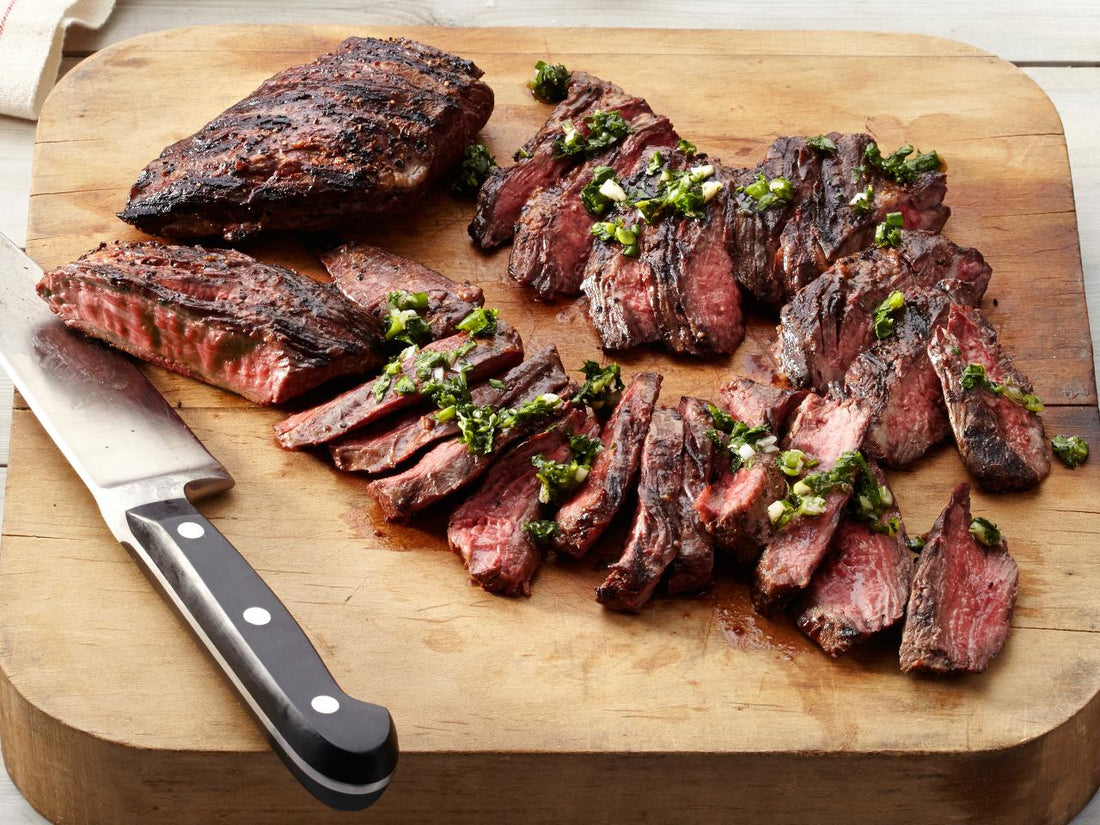Grilling is not just a cooking technique; it's a culinary art form that transforms raw ingredients into mouthwatering delights. When it comes to grilling, one cannot ignore the sheer pleasure of cooking and savoring a perfectly grilled steak. Whether you're a seasoned grill master or a novice just starting, this comprehensive guide will provide you with invaluable grilling tips for steak that will elevate your skills and leave your taste buds craving more.
Chapter 1: Choosing the Perfect Cut
Before you embark on your grilling journey, it's essential to start with the right cut of meat. The choice of steak can significantly impact the final flavor and tenderness of your grilled masterpiece. Opt for well-marbled cuts like ribeye or New York strip for a juicy and flavorful experience. Leaner cuts like sirloin or filet mignon are excellent choices for those who prefer a leaner option.
Chapter 2: Preparing the Steak
Properly preparing your steak is crucial to ensure it absorbs the flavors and maintains its juiciness during grilling. Follow these steps:
a. Thawing: If your steak is frozen, make sure to thaw it in the refrigerator overnight. Avoid thawing at room temperature to prevent bacterial growth.
b. Patting dry: Use paper towels to pat the steak dry before seasoning. This helps achieve a better sear during grilling.
c. Seasoning: Apply a generous amount of salt and pepper to both sides of the steak. For added flavor, consider using a dry rub or marinade. Allow the steak to rest and absorb the seasonings for at least 30 minutes before grilling.
Chapter 3: Mastering the Grill
Now that your steak is properly prepared, it's time to fire up the grill. Pay attention to the following key aspects:
a. Preheating: Preheat your grill to the appropriate temperature based on the cut of steak you're cooking. High heat is ideal for thinner cuts, while thicker cuts benefit from a medium heat setting.
b. Oil the grates: Prevent sticking by brushing the grill grates with oil before placing the steak. Use tongs and a folded paper towel dipped in oil for an even coat.
c. Achieving the perfect sear: Place the steak on the hot grill and let it sear for a few minutes on each side. This initial sear locks in the juices and creates a flavorful crust. Avoid excessive flipping; once per side is generally sufficient.
Chapter 4: Temperature Control
Achieving the desired level of doneness is a critical aspect of grilling steak. Invest in a reliable meat thermometer to ensure precision. Here's a quick guide to internal temperatures:
a. Rare: 120-130°F (49-54°C) b. Medium Rare: 130-135°F (54-57°C) c. Medium: 140-145°F (60-63°C) d. Medium Well: 150-155°F (66-68°C) e. Well Done: 160°F (71°C) and above
Chapter 5: Resting Period
Once your steak reaches the desired temperature, resist the temptation to cut into it immediately. Allow it to rest for about 5-10 minutes to let the juices redistribute, resulting in a more tender and flavorful steak.
Chapter 6: Flavor Enhancements
Elevate the taste of your grilled steak with these flavor-boosting tips:
a. Herb butter: Create a simple herb-infused butter to baste the steak during grilling or as a finishing touch. Combine melted butter with minced garlic, rosemary, and thyme for a burst of flavor.
b. Wood chips for smoke flavor: Experiment with different wood chips to add a smoky dimension to your steak. Hickory and mesquite are popular choices.
c. Chimichurri sauce: This vibrant and zesty Argentinean sauce made with parsley, garlic, vinegar, and olive oil is the perfect accompaniment to grilled steak.
Chapter 7: Grilling Accessories
Investing in quality grilling accessories can make your grilling experience more enjoyable and efficient. Consider the following:
a. Grill thermometer: Ensure accurate temperature readings for perfectly cooked steak.
b. Grill brush: Keep your grates clean to prevent sticking and enhance the searing process.
c. Tongs and spatula: Invest in long-handled tongs and a sturdy spatula for easy flipping and maneuvering of the steak.
Chapter 8: Grilling Tips for Different Cuts
Different cuts of steak require varying techniques for optimal results. Here's a brief overview:
a. Ribeye: With its high fat content, ribeye is forgiving and tends to remain juicy even if slightly overcooked. Grill over high heat for a perfect sear.
b. New York Strip: This leaner cut benefits from a good sear on high heat, but be cautious not to overcook it to maintain tenderness.
c. Filet Mignon: Due to its lean nature, filet mignon is best cooked to medium-rare to preserve its tenderness and flavor.
d. Sirloin: This versatile cut can be grilled over medium heat, and it's essential to let it rest adequately to maintain juiciness.
Chapter 9: Troubleshooting Common Issues
Even the most experienced grillers encounter challenges. Here's how to address common grilling issues:
a. Uneven cooking: Arrange the coals or adjust the burner settings to create different heat zones on the grill. Move the steak to a cooler area if needed.
b. Flare-ups: Trim excess fat from the steak to reduce flare-ups. Keep a spray bottle of water nearby to control flames.
c. Dry steak: Ensure you don't overcook the steak, and consider using a meat marinade or brine for added moisture.
Conclusion:
Grilling the perfect steak is a skill that evolves with practice and a passion for the art of cooking. Armed with these comprehensive tips, you are well-equipped to embark on a journey towards becoming a grill master. Experiment with flavors, cuts, and techniques to discover your signature approach to grilling the perfect steak every time. So, fire up that grill, savor the aromas, and enjoy the delicious rewards of your newfound grilling expertise. Happy grilling!

